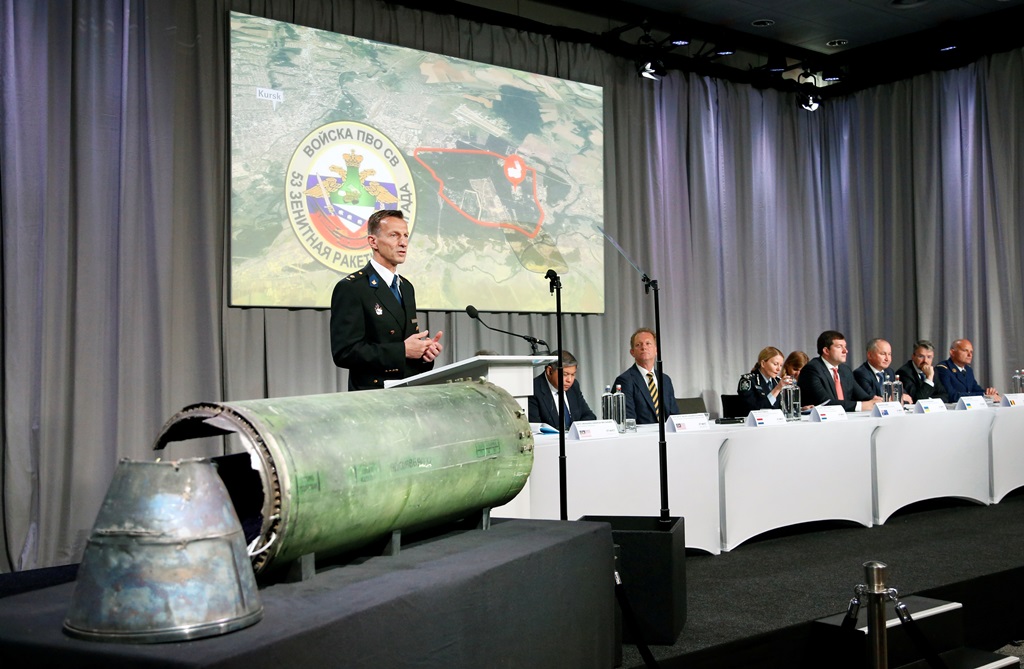Ukraine’s Law on the Occupied Territories in Donbas
Key Aspects of the New Law
On 18 January, Ukraine’s parliament, the Verkhovna Rada, adopted the law On Certain Aspects of State Policy on Securing State Sovereignty over the Temporarily Occupied Territories of the Donetsk and Luhansk Oblasts. The law recognises parts of these regions as occupied territories where, because of the Russian aggression, power is exercised by Russia through its occupation administration and armed forces. It also states that Russia is responsible for ensuring the protection of the rights of civilians in these areas and for material damage. The law, however, does not apply to Crimea, also considered under occupation but part of the 2014 law On the Protection of Citizens’ Rights and Freedoms and the Legal Regime in Temporarily Occupied Territory.
The new law declares that Ukraine’s main policy goal regarding the occupied parts of the Donetsk and Luhansk regions should be to liberate them and renew the constitutional order there, but it does not specify how to achieve that.
On the other hand, the law regulates practical issues related to military activities carried out by Ukraine in Donbas, primarily by granting a new legal basis for the use of Ukrainian troops. The president now has the right to use the armed forces during peacetime to “refute and stop” Russian armed aggression. The law does not mention the term “war,” although Ukraine refers to the right to self-defence under Art. 51 of the UN Charter. So far, military units have been deployed in Donbas under the law On the Fight Against Terrorism, which raised legal doubts as to the legality of the operation.
At the same time, the command structure of the Ukrainian forces in Donbas is being optimised. The management over all units involved in activities aimed at “refuting and stopping” Russian armed aggression in the Donetsk and Luhansk regions, including law-enforcement agencies, intelligence services, etc., has been taken over by the Joint Operational Staff, which brings it legal sanction. Until now, the formal leadership of the Ukrainian forces in Donbas had been exercised by the Security Service of Ukraine (SBU) within what it called an anti-terrorist operation (ATO). However, in practice, the General Staff was in charge of activities at the frontline. Although the law opens the way to end the ATO, that is not a forgone conclusion, since both regimes—“refuting and stopping” Russian armed aggression and the ATO—can operate in parallel.
The law contains a clause in which the full withdrawal of Russian troops from the territory of the Donetsk and Luhansk regions must be officially confirmed by the president of Ukraine at the joint request of the ministers of defence and internal affairs. For Ukraine, the withdrawal of Russian troops is one of the main conditions for conducting local elections in these areas, which is one of the key points within the Minsk Agreements. The clause was probably included in the law so that Ukraine’s authorities cannot be forced to hold a vote in the regions without this demand having first been met. In February 2017, the possibility of that scenario was mentioned by the German ambassador in Kyiv, Ernst Reichel, which caused widespread indignation in Ukraine.
International Context
The law was perceived as an instrument to increase pressure on Russia, which is why its adoption was postponed many times. Although the law was ready in mid-2017, it was not registered in parliament, and after the July visit of U.S. Secretary of State Rex Tillerson to Kyiv, the Ukrainian authorities announced that additional consultations with foreign partners needed to be held. The slowdown of the adoption of the bill was recommended by the American diplomats to leave Kurt Volker, the then-U.S. Special Representative for Ukraine Negotiations, room for manoeuvre in talks with Russian President Vladimir Putin’s aide, Vladislav Surkov. Germany and France also sought to stop work on the law in the hope they could persuade Russia to a ceasefire in Donbas. The failure of talks within the Normandy Format and negotiations between Volker and Surkov on the deployment of a UN peacekeeping operation in the occupied parts of the Donetsk and Luhansk regions probably prompted the Ukrainian authorities to conclude work on the law. Proof that the U.S. likely approved of the step may be the recent decision of the U.S. administration to supply Ukraine with advanced weaponry, including Javelin anti-tank missiles.
Internal Context. The law was adopted at the initiative of Ukrainian President Petro Poroshenko who wanted to strengthen his position on the domestic political scene in response to accusations from the opposition and part of the ruling coalition that he held too conciliatory a position towards Russia. It also fits into Poroshenko’s plans for the campaign ahead of the presidential election scheduled for March 2019, in which he is expected to rely on patriotic and anti-Russian rhetoric to win votes.[1] For a long time, Poroshenko had been against recognising the territory in the Donetsk and Luhansk regions controlled by Russia as “occupied” and blocked the adoption of similar laws registered in parliament by the opposition, but he changed his position last spring when, under public pressure, Ukraine’s authorities were forced to introduce the so-called trade blockade of Donbas. The need to adopt the law clarifying the territories’ status was pointed to by many Ukrainian experts. Also, according to public opinion polls, at the beginning of June 2017, definitively declaring the areas of the Donetsk and Luhansk regions out of the government’s control as occupied was supported by more than half of Ukrainians.
Conclusions
The law is a framework legal act and mainly declarative. Its adoption will not affect the situation on the frontline and will not create instruments to enable Ukraine to take actions to regain control over the territory now formally recognised as occupied by Russia. The law also does not lay out the future policy of the state towards these areas that the government could implement in the period after the end of military operations and withdrawal of Russian troops. Because the war cannot quickly be ended, Ukraine’s authorities did not seek to develop a strategy for the re-integration of the Russia-occupied territories of the Donetsk and Luhansk regions but instead sought a modus vivendi with these areas acceptable both to the Ukrainian public and Ukraine’s foreign partners.
It is unlikely that the adoption of the law will strengthen Ukraine’s negotiating position on the possible deployment of a UN peacekeeping mission in the occupied parts of the Donetsk and Luhansk regions. Article 51 of the UN Charter obliges a state to notify the Security Council (UNSC) about any actions taken in self-defence. By declaring such activities, Ukraine can therefore exert political pressure on the UNSC to act to restore peace and security in the region. However, Russia will certainly exercise its veto right if a UNSC peacekeeping mission mandate requires Russia to give up control over these parts of Donbas.
Nevertheless, the law has political significance since it constitutes an attempt to increase the political cost Russia must incur through its de facto occupation of part of Ukrainian territory by changing the rhetoric used to describe Russian aggression against Ukraine. The terms widely used by politicians and experts to refer to the issue, such as “Ukraine crisis,” “people’s republics,” or just describing the irregular Russian forces in the region as “separatists,” fit into Russian authorities’ portrayals of the situation, meant to deny the presence of Russian troops in Donbas and present it as an internal conflict in Ukraine. Hence, the Ukrainian authorities can now employ their own set of political concepts and expect that they will be used by its foreign partners.
[1] See: D. Szeligowski, “Getting Ready for Ukraine’s Presidential Elections: Poroshenko’s Plan,” PISM Bulletin, no. 9 (1080), 19 January 2018.





